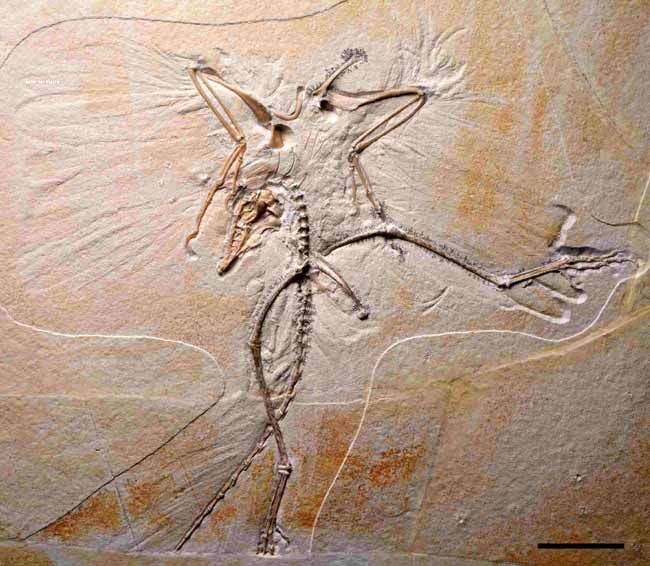Dinosaurs Died Agonizing Deaths

Fossilized dinosaurs often have wide-open mouths, heads thrown back and tails that curve toward the head. Paleontologists have long assumed the dinosaurs died in water and the currents drifted the bones into that position, or that rigor mortis or drying muscles, tendons and ligaments contorted the limbs. "I'm reading this in the literature and thinking, 'This doesn't make any sense to me as a veterinarian,'" said Cynthia Marshall Faux, a veterinarian-turned-paleontologist at the Museum of the Rockies. Faux and a colleague say brain damage and asphyxiation are the more likely culprits. A classic example of the posture, which has puzzled paleontologists for ages, is the 150-million-year-old Archaeopteryx, the first-known example of a feathered dinosaur and the proposed link between dinosaurs and present-day birds. "Virtually all articulated specimens of Archaeopteryx are in this posture, exhibiting a classic pose of head thrown back, jaws open, back and tail reflexed backward and limbs contracted," said Kevin Padian, professor of integrative biology and curator in the Museum of Paleontology at the University of California, Berkeley. He Faux (pronounced "Fox") published their findings this week in the journal Paleobiology. Some animals found in this posture may have suffocated in ash during a volcanic eruption, consistent with the fact that many fossils are found in ash deposits, Faux and Padian said. But many other possibilities exist, including disease, brain trauma, severe bleeding, thiamine deficiency or poisoning.
"This puts a whole new light on the mode of death of these animals, and interpretation of the places they died in," Padian said. "This explanation gives us clues to interpreting a great many fossil horizons we didn't understand before and tells us something dinosaurs experienced while dying, not after dying." Also, because the posture has been seen only in dinosaurs, pterosaurs and mammals, which are known or suspected to have had high metabolic rates, it appears to be a good indicator that the animal was warm blooded, as other research has suggested. Animals with lower metabolic rates, such as crocodiles and lizards, use less oxygen and so might have been less traumatically affected by hypoxia during death throes, Padian said. Padian acknowledged that many dinosaur fossils show signs that the animal died in water and the current tugged the body into an arched position, but currents cannot explain all the characteristics of an opisthotonic pose.
- Image Gallery: Dinosaur Art
- Image Gallery: Drawing Dinosaurs
- Dinosaurs That Learned to Fly
Sign up for the Live Science daily newsletter now
Get the world’s most fascinating discoveries delivered straight to your inbox.













